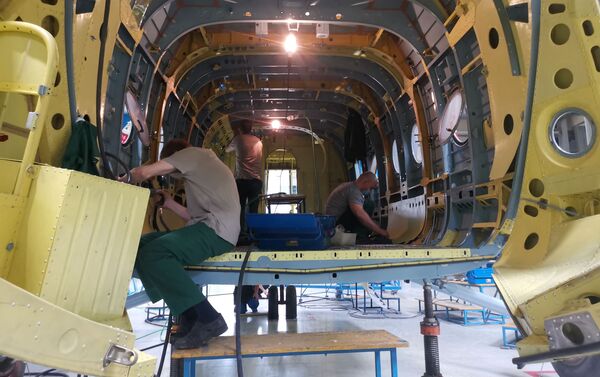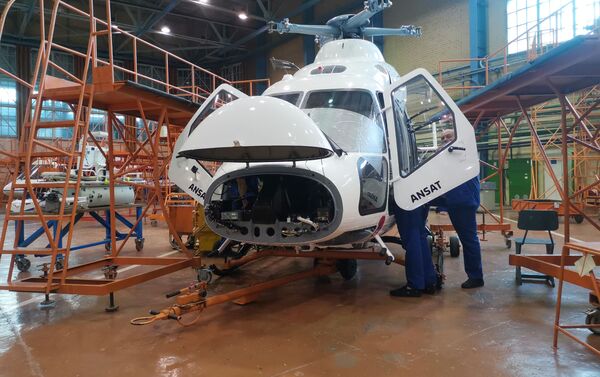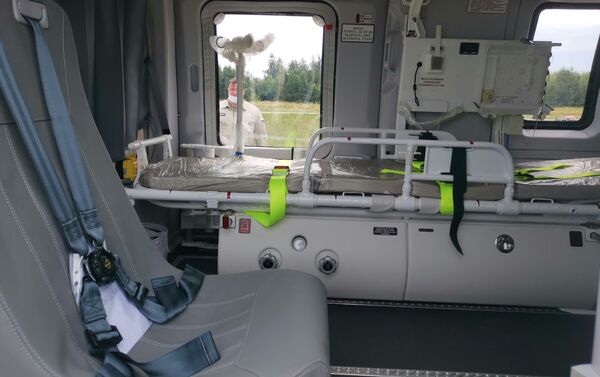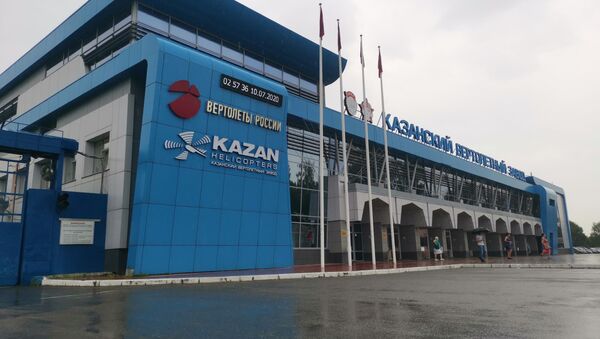Just like many other regions, in early spring of 2020, Russia’s Republic of Tatarstan saw an increase in the number of COVID-19 cases, with the first patient being hospitalised in the capital Kazan on 17 March.
The pandemic led to serious changes for most local industries. The Kazan Helicopter plant – one of Tatarstan’s key manufacturing facilities, which is part of the Russian Helicopters holding company, managed to continue functioning throughout the lockdown and to produce aircraft – the acclaimed Mi-8/Mi-17, "the newcomer" ANSAT, which was designed locally, and "the heavyweight" Mi-38.
According to Russian government data, by 11 July a total of 4,964 COVID-19 cases had been registered in Tatarstan, with the overall number of recoveries standing at 3,912. But even though the republic is currently at the second stage of lifting its coronavirus restrictions, some of them, including wearing masks and following social distancing rules, are still in place.
First thing you notice when entering Kazan Helicopter Plant is the reminder to check body temperature and to use sanitizers. In some parts of the assembly line masks were a requirement before COVID-19, but now their use is mandatory for all employees. pic.twitter.com/5XNdUwgHHJ
— Denis Bolotsky (@BolotskySputnik) July 11, 2020
The plant’s management took steps to reduce risks to the staff. According to chief technologist Aleksandr Yevdokimov, this even included moving some of the plant’s equipment off-site:
“Some tasks, such as design, technological process development, working with documents, approval of documents in electronic form, can be done remotely. We were able to arrange the transition by giving computers to our engineers so that they could log in to our system from home to continue their work”.
In April and May, one of the plant’s flagship machines – the lightweight twin-engine ANSAT model – was quickly adapted for transporting coronavirus patients. In the middle of May, Russian Helicopters obtained approval from the country's Federal Air Transport Agency (Rosaviatsiya) to install isolation units into ANSAT’s medical version.
While the original purpose of ANSAT’s medical module was transporting people with various traumas, both Russian Helicopters, and their partners in Tatarstan who produce the module, were able to modify it quickly for COVID-19 patients. pic.twitter.com/6ItBQPNVi5
— Denis Bolotsky (@BolotskySputnik) July 11, 2020
Aleksandr Alekseyev, the director of Russian Helicopters' ANSAT programme, says that the concept of the new isolation unit did not require changes to the helicopter’s design:
“Transporting of coronavirus patients can be done with the use of an airtight box. It looks like a plastic bag. The patient is being placed inside and the unit is connected to ventilators to pump oxygen into the lungs”.
According to Russian Helicopters, more than 30 ANSATs have been supplied to the country's regions for air medical services. ANSAT is certified for use in various conditions, with temperatures ranging from -45 to +50 degrees Celsius, so the geography of deployments ranges from the central Moscow, Kirov, Tver, and Kostroma regions, to southern Russia’s Volgograd and Astrakhan, as well as to Chelyabinsk in the Urals.
Headquartered in Moscow, the Russian Helicopters holding company is a part of the Rostec State Corporation and is currently the country’s sole designer and manufacturer of helicopters. It operates five assembly plants and two design bureaus, as well as its own component production, repair, and maintenance enterprises.






